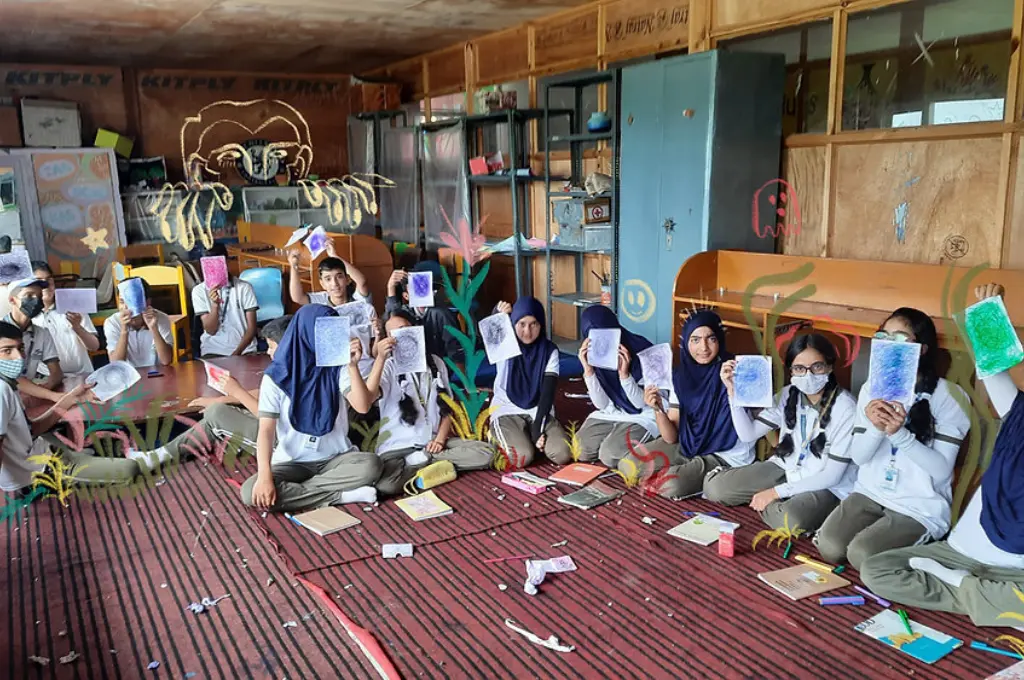Games remain an underexplored methodology in the development space, even though they offer unique opportunities to break silos, build trust, and foster openness to differing opinions. Traditional media—film, radio, and other one-directional formats—do not offer participation. They present information and rely on the viewer’s ability to absorb and interpret. But they stop short of empowering the user with agency, decision-making, or critical thinking. Games, on the other hand, drop you directly into a scenario. You are not just observing; you are also acting and deciding. It is participation at its most immersive and compelling.
This is what makes them so powerful for facilitators and grassroots organisations: Games can become spaces to reflect, learn, and move towards collective action. The use of games as a way to imagine a better future for urban planning and city design is well documented.
When the digital game ‘SimCity’ was launched in the early ‘90s, it was not expected to inspire thousands of young people in finding a career as architects or urban planners. And now the game—along with others such as ‘Cities: Skylines’, or even the game-building engine Unreal—is being used for creating playable environments to find solutions to problems such as the heat island effect, transportation, housing, and future-ready cities.

Where we are now
Games come in various formats: physical games such as live-action role-playing (LARPing); board games; and digital games found on phones, consoles, and computers. Each of these formats has its own audiences, uses, and possibilities.
Games and gamification now permeate daily life—from language learning apps and fitness trackers to dating platforms and financial planning tools. Gamification is increasingly being seen as a universal solution, one that peppers challenges, rewards, and gratification to address even the most entrenched behavioural patterns: procrastination, poor diets, or disengagement from civic life.
Some of the most exciting experiments in imagining climate resilience, for example, are happening through climate LARPing in Scandinavia, where communities role-play future scenarios of ecological collapse and survival. LARP is a widely utilised method of interactive storytelling. Through experiential play, participants engage with a story and perform relevant actions.
However, games are still a grossly underutilised medium in the social sector.

Building development games
At Civic Games Lab, our focus is on developing games that address various critical issues such as public health, democracy, media, gender, and the environment. Scientific rigour, cultural resonance, and community ownership are the three guiding principles that shape every game we create.

When building development games, here are key things to ensure.
1. Using language, metaphors, references, histories, and literature suited to Indian contexts
These are the most important tools in designing game mechanics, visual elements, and even the story that players immerse in when playing. In Kotagiri, Tamil Nadu, we are designing a game to communicate the devastation caused by climate change, which is affecting agriculture and allied activities. Here, the loss of fruit-bearing trees is the pivot around which we will design the mechanic, the storyline, and the gameplay. Games must have a level of localisation, or the scope to be situated culturally within the various communities it will be played in, which is lost when they are exported. For example, a ‘market’ in the West is something very different from a mandi here and the actions and experiences around it.
2. Centring agency towards social change and a better future
Games must aid in embracing complexity, co-creating play experiences, and feeding an appetite for people to take part in their own stories and become agents of change. Our core belief is that the games must be designed such that those who are historically disenfranchised, or unable to situate themselves, have a tool that helps in building greater agency and, through that, communities can find the space to develop their own ways to act.
Between 2020 and 2022, we developed ‘Poshan ki Potli’, a card game that weaves together lessons on diet diversity, maternal and child nutrition, and understanding of food preparation and eating habits. It was conceived against the backdrop of rising malnutrition during and after the COVID-19 pandemic, and was carefully aligned with the core nutrition messages championed by both national and state governments.
We played ‘Poshan ki Potli’ across four states, culminating in a pilot with JEEViKA—the Bihar Rural Livelihoods Mission—in Gaya.
The game emerged from a rigorous scientific and academic process. We drew from public research, global standards, seminal academic work, flagship programmes of other nonprofits, and insights from the National Institute of Nutrition. We mapped local foods, aligned them with government mandates, calculated calorific values, and translated them into points that could be understood and played with intuitively.
Through iterative design—building several versions, testing them out in the field, tweaking our game mechanic and the visual design—the game was infused with the voices of the community, their lived experiences, and the daily tu-tu-main-main of household life. These realities shaped the gameplay: first, understanding food groups; then a lively version of ‘Heads Up!’—a word-guessing game in which players put cards on their foreheads and guess the item on the card by asking the other players questions; and finally, building card sets of ‘what you ate yesterday’ and ‘what you will eat tomorrow’.
What we learned
1. Localisation is necessary for ownership
When we first brought the game to villages, we witnessed something transformative. Card games, long perceived as the preserve of men, were suddenly in the hands of women, who took immense delight in shuffling the decks. Initially, we asked the women to pick the top card from a deck, as is typical in most games. But in one instance, a woman, noticing the fruits and vegetables illustrated on the cards, paused and asked, “Are there more?”
We spread the cards out like produce in a mandi. Instinctively, the women squatted on their haunches, examining and picking through the cards as though shopping for fresh food. In that moment, the mandi became the game’s central metaphor, rooting it firmly in their world and lives.
Two years on, an independent IPSOS assessment revealed that the women in Gaya had come up with their own versions of the games. One version was similar to ‘Heads Up!’, with words like mango and urad dal written on the cards. The women of the group renamed it to ‘Bindi Game’, because that’s where they held the cards on their foreheads.
2. The simpler the rules the better
One of our learnings is that there is little patience for complexity—if the rules are not instinctive, intuitive, and absorbed immediately, and there is too much exposition, then the gameplay collapses entirely. In ‘Poshan ki Potli’, there is one version that is played like a regular card game: You pick cards to build a meal or make a dish. We wanted to create the atmosphere of a kitchen. However, as the rules require sequential card-picking, and the game is not as participatory or community-centric, this version does not get played often.
Over the last few years, we have designed games to raise awareness, chart pathways of action and safety, and spur active citizenship across a range of urgent concerns: democratic deepening, gender-based violence, digital rights, artificial intelligence, and climate change and resilience.
As we continue to design, develop, and deploy games, we have encountered a major gap in how development communication works today. It remains unidirectional and non-participative, and rarely taps into the individual’s need to be an agent of change. Games can challenge this.
—
Know more
- Learn more about how funders can help build games for social impact.
- Learn more about games related to climate change.




